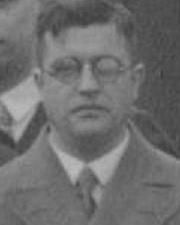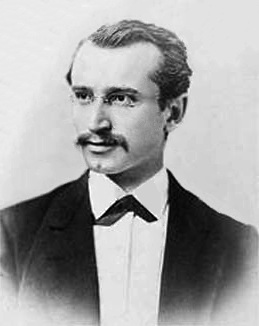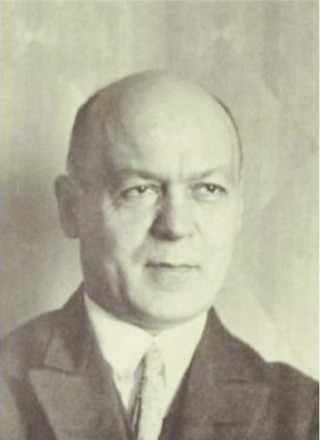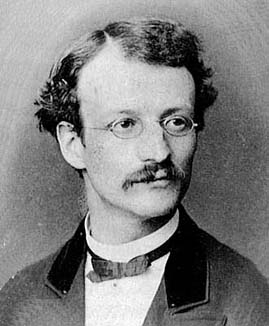
Marius Sophus Lie was a Norwegian mathematician. He largely created the theory of continuous symmetry and applied it to the study of geometry and differential equations. He also made substantial contributions to the development of algebra.

Jacques Salomon Hadamard was a French mathematician who made major contributions in number theory, complex analysis, differential geometry, and partial differential equations.

Wilhelm Johann Eugen Blaschke was an Austrian mathematician working in the fields of differential and integral geometry.

Adolf Kneser was a German mathematician.

Oskar Perron was a German mathematician.
Edward Charles "Ted" Titchmarsh was a leading British mathematician.
James P. Pierpont was an American mathematician born in Connecticut.

Gerhard Hessenberg was a German mathematician who worked in projective geometry, differential geometry, and set theory.

Guido Karl Heinrich Hoheisel was a German mathematician and professor of mathematics at the University of Cologne.

Friedrich Engel was a German mathematician.

Stefan Bergman was a Poland-born American mathematician whose primary work was in complex analysis. He is known for the kernel function he discovered in 1922 at University of Berlin. This function is now known as the Bergman kernel. Bergman taught for many years at Stanford University.

Francesco Giacomo Tricomi was an Italian mathematician famous for his studies on mixed type partial differential equations. He was also the author of a book on integral equations.

Ludwig Schlesinger, was a German mathematician known for the research in the field of linear differential equations.

Gustav Doetsch was a German mathematician, aviation researcher, decorated war veteran, and Nazi supporter.

Alexander Wilhelm von Brill was a German mathematician.

Leon Lichtenstein was a Polish-German mathematician, who made contributions to the areas of differential equations, conformal mapping, and potential theory. He was also interested in theoretical physics, publishing research in hydrodynamics and astronomy.

Georg Scheffers was a German mathematician specializing in differential geometry.

Edward James McShane was an American mathematician noted for his advancements of the calculus of variations, integration theory, stochastic calculus, and exterior ballistics. His name is associated with the McShane–Whitney extension theorem and McShane integral. McShane was professor of mathematics at the University of Virginia, president of the American Mathematical Society, president of the Mathematical Association of America, a member of the National Science Board and a member of both the National Academy of Sciences and the American Philosophical Society.
Arthur Sard was an American mathematician, famous for his work in differential topology and in spline interpolation. His fame stems primarily from Sard's theorem, which says that the set of critical values of a differential function which has sufficiently many derivatives has measure zero.
Friedrich Dingeldey was a German mathematician.
















